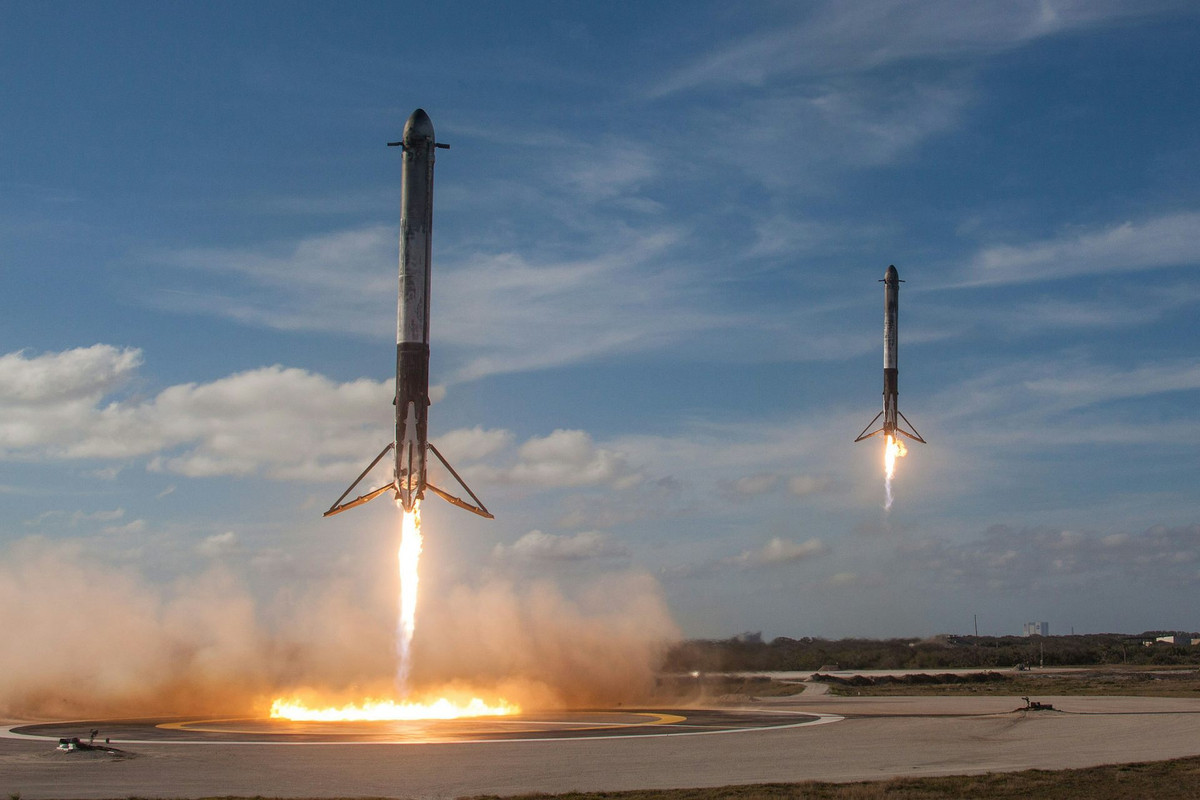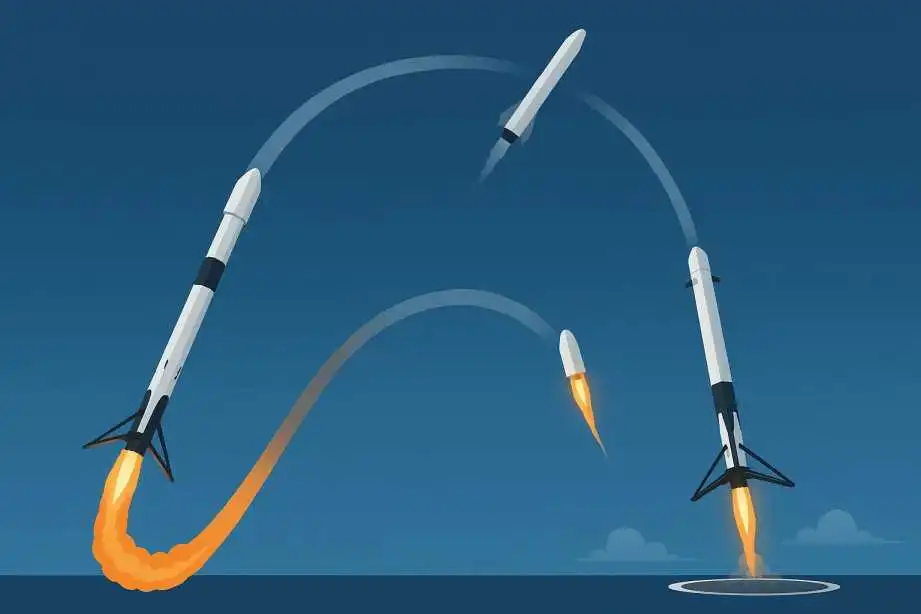For a long time, area journey changed into reserved for governments, charges had been astronomical, and rockets were unmarried-use machines. That all changed with SpaceX, Elon Musk’s trailblazing aerospace business enterprise.
Which flipped the script by growing reusable rockets — dramatically slicing fees and redefining what’s possible in area exploration. But how exactly does SpaceX make its rockets reusable? Let’s spoil it down in simple phrases.
The Old Way: Single-Use Rockets

Before SpaceX launch today got here along, nearly every rocket despatched into space was used as soon as and discarded. These large machines could burn hundreds of thousands of gallons of fuel, supply their payload into orbit, after which fall back to Earth — both burning up within the environment or crashing into the ocean.
Read Also: NASA Sets Coverage for 32nd SpaceX Resupply Mission Departure
Imagine flying from New York to London after which throwing the airplane away after one trip. That’s essentially how traditional area launches labored.
It was highly luxurious and wasteful. And it intended that launching some thing into SpaceX launch today and satellites, materials, or astronauts — got here with a hefty rate tag.
Enter SpaceX’s Reusability Revolution
Elon Musk’s imaginative and prescient for SpaceX became formidable from the begin: make space tour greater like air travel — reusable, low-priced, and frequent.

In 2015, SpaceX made records with the aid of successfully landing the primary stage of its Falcon nine rocket lower back on stable ground after launch. It become the primary time a rocket had back to Earth intact and equipped to fly again. Since then, SpaceX has best-tuned and perfected this system.
But how do they do it?
Breaking It Down: The Reusable Rocket Process
SpaceX rockets are reusable usually because of three key improvements:-
1. Two-Stage Rocket Design
The Falcon 9, SpaceX’s workhorse rocket, consists of two tiers:
First Stage (Booster): The backside element that does the heavy lifting for the duration of release, powering the rocket out of Earth’s gravity.
Related Article: What is the Purpose of SpaceX Crew 10 Mission?
Second Stage: The top component that takes the payload (like satellites or shipment) into orbit.
Only the primary level is reused — and this is the component that returns to Earth after launch.
2. Controlled Landing and Recovery
After the primary stage separates, rather than falling into the ocean and being misplaced, SpaceX instructions it to reignite a number of its engines and guide itself back off to Earth — in one piece.
There are two principal ways they land it:
Landing Pad (on stable ground): At websites like Cape Canaveral, Florida.
Drone Ship (in the ocean): An self sustaining floating platform nicknamed “Of Course I Still Love You” or “Just Read the Instructions”.
To attain this, SpaceX uses:
Cold Gas Thrusters: Small engines that assist the booster turn and orient itself for reentry.
Grid Fins: Metal wings that pop out and assist steer the rocket like a skydiver controls their descent.
Landing Legs: These deploy simply before touchdown to absorb the effect and maintain the rocket upright.
3. Refurbishment and Relaunch
Once the booster lands, it's taken back to SpaceX facilities where engineers check out, refurbish, and refuel it. Surprisingly, many elements of the rocket don’t need changing — only minor upkeep and checks.
SpaceX has released the same Falcon 9 booster over 15 times, proving that reusability is more than just a idea — it’s a verified, operating model.
Why Reusability Matters?
Reusable rockets are a sport-changer for the distance industry.
Here’s why:
Massive Cost Savings: Launching a brand new Falcon 9 costs around $62 million. Reusing you will reduce that by way of extra than 50%.
Faster Turnaround: Instead of building a brand new rocket on every occasion, the same booster can fly again within weeks.
More Access to Space: Lower charges mean more satellites, greater medical missions, or even space tourism end up financially viable.
Environmental Benefits: Reusability reduces the need for consistent production and minimizes area debris.
Not Just Falcon 9: Starship and the Next Step
SpaceX launch today isn’t preventing at the Falcon 9.
The business enterprise is growing Starship, an even large, completely reusable spacecraft designed for missions to the Moon, Mars, and beyond. Starship goals to make each levels reusable — a leap forward that could make area tour definitely habitual.
Starship has already finished numerous high-altitude take a look at flights, and full orbital launches are planned for 2025 and beyond. If successful, it can dramatically lower the price consistent with kilogram to orbit and make lengthy-time period space colonization a actual possibility.
FAQs- SpaceX launch today
Q1: How commonly can a Falcon 9 rocket be reused?
Some boosters were reused over 15 times, with plans to push that variety even higher.
Q2: Does reusing rockets compromise safety?
No. Every reused rocket undergoes rigorous checking out and inspection. SpaceX has launched astronauts on reused rockets with NASA’s complete approval.
Q3: How long does it take to refurbish a rocket?
The turnaround time may be as short as 21–30 days, though this varies relying on challenge complexity and wear.
Q4: Are some other businesses reusing rockets?
Yes, Blue Origin has reusable rockets for suborbital flights, and Rocket Lab is working on comparable era — however SpaceX leads the enterprise in operational reuse.
Final Thoughts
SpaceX’s reusability version isn’t just an engineering feat — it’s a paradigm shift in how we method area. By getting better and reusing rockets like the Falcon nine, SpaceX has established that space doesn’t must be prohibitively high-priced.
As the organisation pushes beforehand with Starship and ambitions to colonize Mars, the idea of a “spacefaring civilization” feels greater real than ever. And it all commenced with the simple — but revolutionary — idea that rockets shouldn’t be thrown away after one use.
So the subsequent time you watch a SpaceX release, consider: that rocket hovering into the sky might have executed it all earlier than — and might be again once more in just a few weeks.

